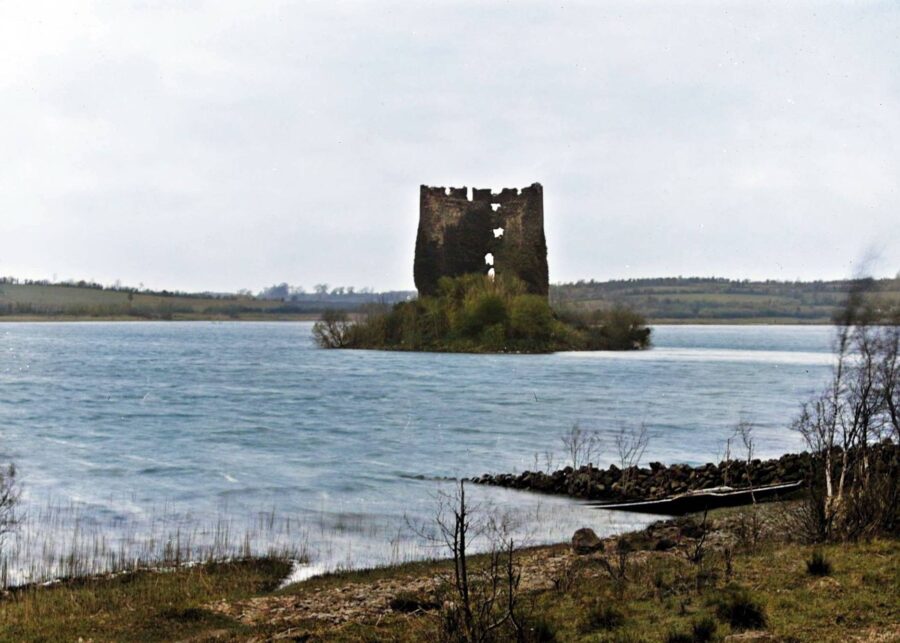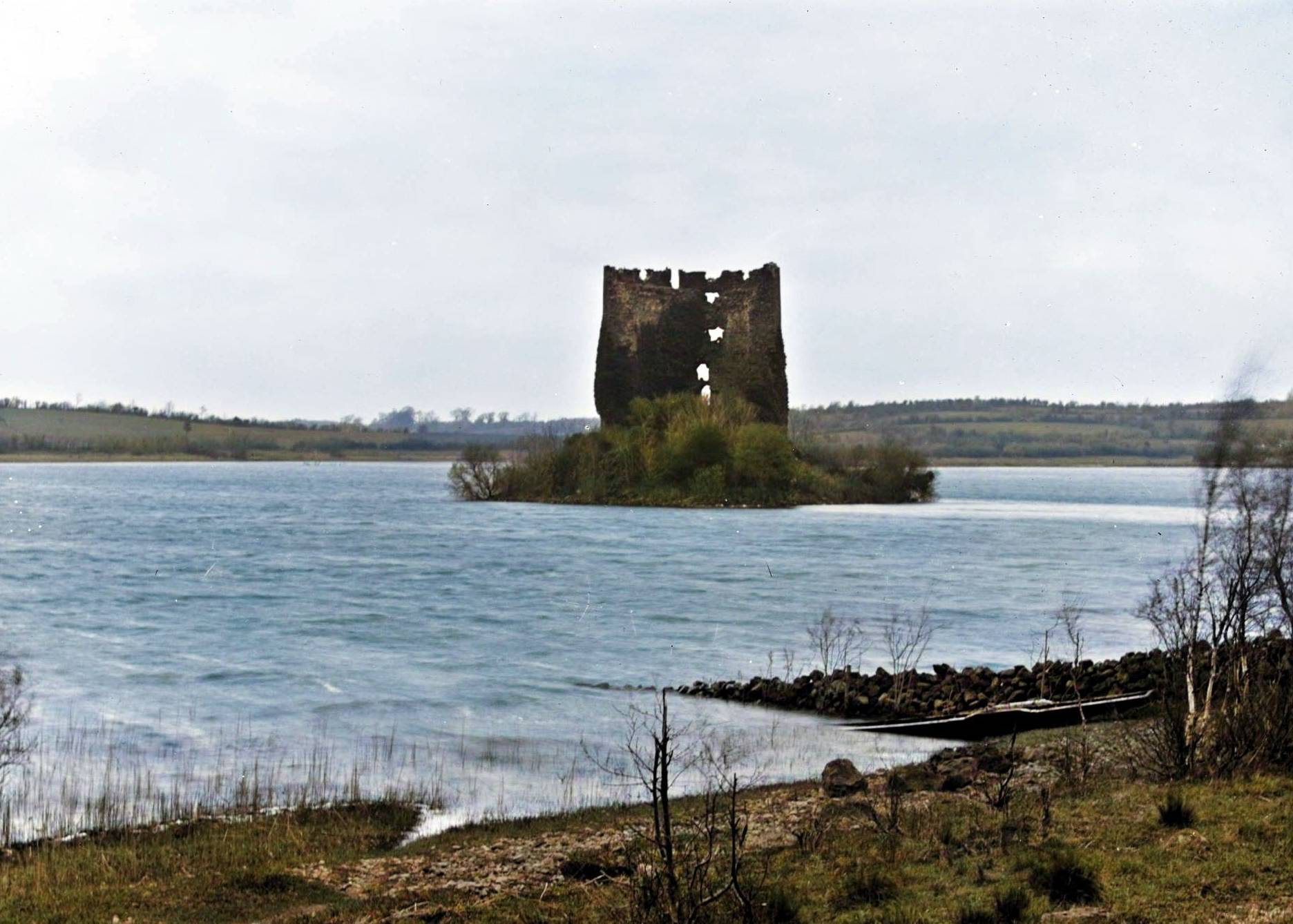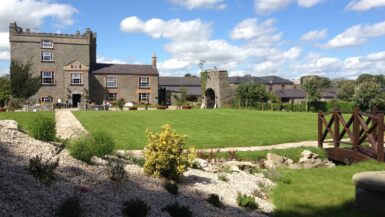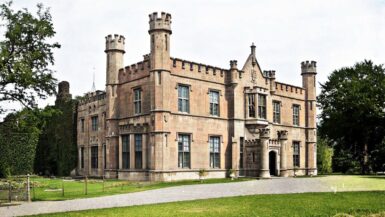Cloughoughter Castle, a picturesque ruin situated on a small island in Lough Oughter, Co. Cavan, Ireland, is a historical treasure that has captivated visitors and locals alike for centuries. The castle’s enchanting presence, combined with its rich history, makes it an essential destination for anyone interested in exploring Ireland’s past. This article delves into the captivating story of Cloughoughter Castle, providing an in-depth look at its origins, notable events, and the legends that surround it.
The Early Beginnings of Cloughoughter Castle
The origins of Cloughoughter Castle can be traced back to the 12th century when the Anglo-Normans arrived in Ireland. At this time, the area surrounding Lough Oughter was controlled by the O’Reilly clan, a powerful Irish family that ruled over the kingdom of East Breifne, which encompassed modern-day Co. Cavan and parts of Co. Leitrim.
It is believed that the initial structure on the island was a simple wooden fort, constructed by the O’Reillys as a defensive stronghold against invading forces. However, as the Anglo-Normans continued to exert their influence over Ireland, the O’Reillys recognized the need for a more formidable fortress. Thus, construction of the stone castle we see today began in the early 13th century.
The Impressive Architecture of Cloughoughter Castle
One of the key aspects that sets Cloughoughter Castle apart from other Irish castles is its distinctive architectural design. The castle is a prime example of a cylindrical keep, a design more commonly found in 12th and 13th-century English castles. The keep consists of four stories, with the ground floor acting as a storage area and the upper floors providing living quarters for the inhabitants.
The thick walls of Cloughoughter Castle, measuring up to 3 meters (10 feet) in some places, were constructed using limestone sourced from the surrounding area. This impressive fortification, coupled with the castle’s strategic location on an island, made it an impenetrable stronghold in its heyday.
The castle’s entrance is located on the first floor and was originally accessed via a wooden drawbridge, which would have connected the island to the mainland. This elevated entrance served as an additional security measure, ensuring that the castle was well-protected from potential threats.
A Turbulent History: Cloughoughter Castle and the O’Reilly Clan
Throughout its history, Cloughoughter Castle played a pivotal role in the power struggles that plagued the region. In the 14th century, the castle was captured by the Anglo-Normans, who held it for a brief period before it was reclaimed by the O’Reillys.
The castle’s strategic importance continued to grow during the 15th and 16th centuries, as the O’Reillys found themselves caught in the crossfire between the English Crown and the Gaelic Irish chieftains. Cloughoughter Castle became a crucial stronghold for the O’Reillys, allowing them to maintain their power and independence despite the increasing pressures from the English government.
During the Nine Years’ War (1594-1603), the castle once again changed hands, as it was captured by the English forces led by Sir Richard Bingham. The O’Reillys eventually regained control of Cloughoughter Castle, but their victory was short-lived, as the castle was besieged and captured by the English again in 1602.
Cloughoughter Castle and the Flight of the Earls
Cloughoughter Castle played a significant role in one of the most pivotal moments in Irish history: the Flight of the Earls in 1607. Following the defeat of the Irish and Spanish forces at the Battle of Kinsale in 1601 and the subsequent end of the Nine Years’ War, many Gaelic Irish chieftains, including Hugh O’Neill, the Earl of Tyrone, and Rory O’Donnell, the Earl of Tyrconnell, chose to leave Ireland for mainland Europe. This mass exodus marked the end of the old Gaelic order and paved the way for the English colonization of Ireland.
Before their departure, the Earls sought refuge at Cloughoughter Castle, which was still controlled by the O’Reillys at the time. The castle provided the Earls with a safe haven before they embarked on their fateful journey, never to return to Ireland.
The Plantation of Ulster and Cloughoughter Castle’s Decline
The 17th century marked a significant shift in Irish history, with the implementation of the Plantation of Ulster by the English government. This colonization scheme aimed to displace the native Irish population and replace them with English and Scottish settlers, who were loyal to the Crown. As a result, the lands belonging to the O’Reillys and other Irish chieftains were confiscated and redistributed among the settlers.
In 1611, Cloughoughter Castle was granted to Sir Alexander Hamilton, a Scottish settler who was tasked with maintaining the castle and its surrounding lands. However, the castle’s strategic importance began to wane, and over the years, it gradually fell into disrepair.
During the Irish Rebellion of 1641, Cloughoughter Castle was briefly recaptured by the Irish, but it was subsequently taken back by the English forces. By the end of the 17th century, the castle had been abandoned and left to decay.
Cloughoughter Castle in Folklore and Legend
Over the centuries, Cloughoughter Castle has become the subject of numerous local legends and tales. One such story tells of the “White Lady,” a ghostly figure believed to haunt the castle’s ruins. According to the legend, the White Lady is the spirit of a young woman who was imprisoned in the castle by her jealous husband. Trapped within the castle’s walls, she starved to death and now roams the ruins, forever searching for her freedom.
Another popular legend involves a hidden treasure buried somewhere within the castle grounds. This story stems from the belief that the O’Reillys concealed their wealth within the castle’s walls before their lands were confiscated during the Plantation of Ulster. To this day, the treasure remains undiscovered, fueling the imaginations of locals and visitors alike.
Cloughoughter Castle Today: A Symbol of Ireland’s Past
Today, Cloughoughter Castle stands as a haunting reminder of Ireland’s tumultuous past. The castle’s ruins, slowly being reclaimed by nature, provide a captivating glimpse into the lives of those who once inhabited this once-mighty fortress.
Although access to the island is restricted, visitors can still admire the castle’s impressive architecture from the nearby shoreline or by taking a boat tour of Lough Oughter. Cloughoughter Castle remains a popular destination for history enthusiasts, photographers, and anyone looking to explore the rich heritage of Co. Cavan.
By delving into the history of Cloughoughter Castle, we can appreciate the resilience and determination of the Irish people who fought to maintain their identity and independence in the face of adversity. This captivating historical site serves as a testament to the enduring legacy of Ireland’s past, ensuring that the stories and legends of Cloughoughter Castle will continue to inspire and captivate future generations.
The Conservation and Preservation of Cloughoughter Castle
The conservation and preservation of Cloughoughter Castle have become a priority in recent years, with efforts being made to ensure the castle’s enduring legacy. The Office of Public Works (OPW) in Ireland is responsible for the ongoing maintenance and conservation of the castle, ensuring that this important historical site remains a significant attraction for visitors to Co. Cavan.
In 1992, the Cloughoughter Castle Conservation Group was established, with the aim of raising public awareness about the importance of preserving the castle’s ruins. This group of dedicated volunteers has been instrumental in conducting essential maintenance work, such as vegetation control and the repair of the castle’s masonry.
Additionally, local tour operators have played a crucial role in promoting the castle’s historical significance and ensuring that it remains a popular tourist destination. By providing guided tours of Lough Oughter and the surrounding area, these operators are helping to keep the history of Cloughoughter Castle alive and accessible for future generations.
The Cultural Significance of Cloughoughter Castle
Cloughoughter Castle is not just a historical site; it also holds great cultural significance for the people of Ireland. As a symbol of the country’s rich past and the struggles faced by the Irish people, the castle has inspired countless artists, writers, and poets.
One notable example of Cloughoughter Castle’s influence on Irish literature can be found in the poetry of Thomas Moore (1779-1852), an Irish poet who penned the famous “Lalla Rookh.” Moore’s poem “Sweet Innisfallen” references Cloughoughter Castle, reflecting the castle’s enduring impact on the cultural imagination.
In more recent years, Cloughoughter Castle has also served as a backdrop for various film and television productions, further cementing its status as an iconic Irish landmark.







Oh! to live in Ireland – a life-time dream of a red haired girl of Irish decent.